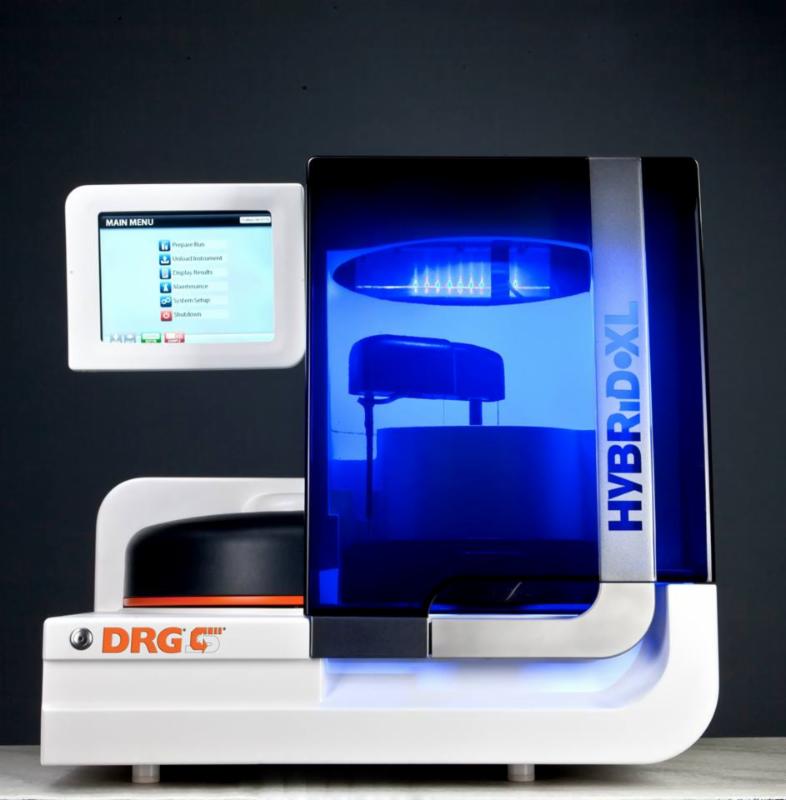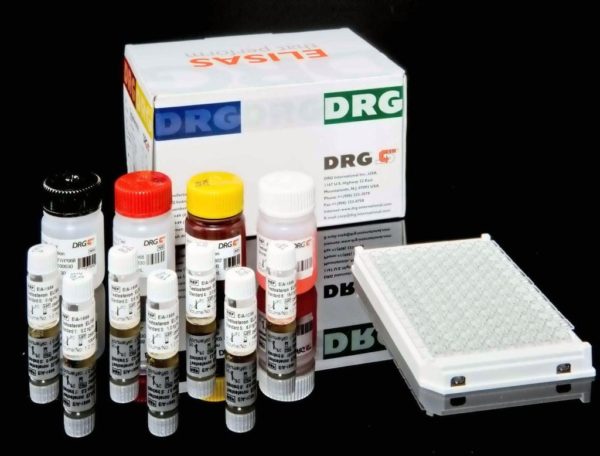Description
The Interleukin 33 (Human) ELISA is an enzyme-linked immunosorbent assay for the quantitative detection of human IL-33. The Interleukin 33 (Human) ELISA is for research use only. Not for diagnostic or therapeutic procedures.
IL-33 is the 11th and most recently discovered member of the IL-1 family of cytokines, which furthermore includes IL-1_, IL-1_, IL-18 and IL-1Ra. As with IL-1_ and IL-18, the
synthesized 30 kDa propeptide IL-33 lacks a clear signal peptide for direct processing via the endoplasmic reticulum and Golgi apparatus. In vivo, caspase-1 cleaves the pro-IL-1_ and pro-IL-18 bioactive forms, an essential step for their subsequent secretion. The mechanism for IL-33 might be similar, but the process has not been fully elucidated yet. In vitro, caspase-1 can cleave human IL_33, which results in a 20-22 kDa mature form. In humans, IL-33 mRNA is predominantly found in dermal fibroblasts, bronchial and small airway epithelial cells and smooth muscle cells of skin and lung tissues. Later, cellular mRNA expression has been observed in adipocytes, synovial fibroblasts, high endothelial venules, and endothelial cells. Furthermore, IL-33 is expressed in fibroblastic reticular cells of lymphoid tissues, skin keratinocytes, epithelial cells of stomach, tonsillar crypts and salivary
glands, cardiac fibroblasts and cardiomyocytes. In most cells the predominant localization of IL-33 is nuclear rather than cytoplasmic. IL-33 specifically binds to IL1RL-1, which is known also as ST2, and is part of the IL-1R family. IL-33 promotes the release of Th2-associated cytokines from in vitro polarized human and murine Th2 cells, and also acts as a Th2 chemotactic factor. IL-33-promoting cytokine production activates human basophils and probably also regulates their migration. IL-33 influence on activation, degranulation,
enhanced adhesion and survival of eosinophils has been shown. Mast cells are well-studied responders to IL-33. The cytokine increases synthesis of IL-6, IL-13, IL-1_, TNF-_, prostaglandin D2 and MCP-1 by primary bone marrow-derived mast cells. Other cells activated by IL-33 are cardiomyocytes, glial cells and CD34+ cells. Studies have shown a role of ST2/IL-33 in asthma. Serum levels of soluble ST2 are increased in patients with acute exacerbation of asthma. IL-33 has been shown to exacerbate allergic airway inflammation by promoting IL_5+ T cells. Increased serum levels were also detected in patients with rhinitis and atopic patients with anaphylaxis. IL-33 gene polymorphism appears to be associated with allergic rhinitis and AlzheimerÕs disease. IL-33 protein is expressed in normal and diseased synovium, but diseased tissue displays higher levels of expression. It has been demonstrated that soluble ST2 plays a role in inflammatory responses in arthritis. Increased levels can be found in synovial fluid in RA patients compared to osteoarthritis controls. Furthermore, patients suffering from other rheumatic diseases such as systemic lupus erythematosus, progressive systemic sclerosis, WegenerÕs granulomatosis and BehcetÕs disease show increased serum IL-33 concentrations.
An anti-human IL-33 coating antibody is adsorbed onto microwells. Human IL-33 present in the sample or standard binds to antibodies adsorbed to the microwells. Following incubation unbound biological components are removed during a wash step. A biotin-conjugated anti-human IL-33 antibody is added and binds to human IL-33 captured by the first antibody. Following incubation unbound biotin-conjugated anti-human IL-33 antibody is removed during a wash step. Streptavidin-HRP is added and binds to the biotin-conjugated anti-human IL-33 antibody. Following incubation unbound Streptavidin-HRP is removed during a wash step, and substrate solution reactive with HRP is added to the wells. A coloured product is formed in proportion to the amount of human IL-33 present in the sample or standard. The reaction is terminated by addition of acid and absorbance
is measured at 450 nm. A standard curve is prepared from 7 human IL_33 standard dilutions and human IL-33 sample concentration determined.




